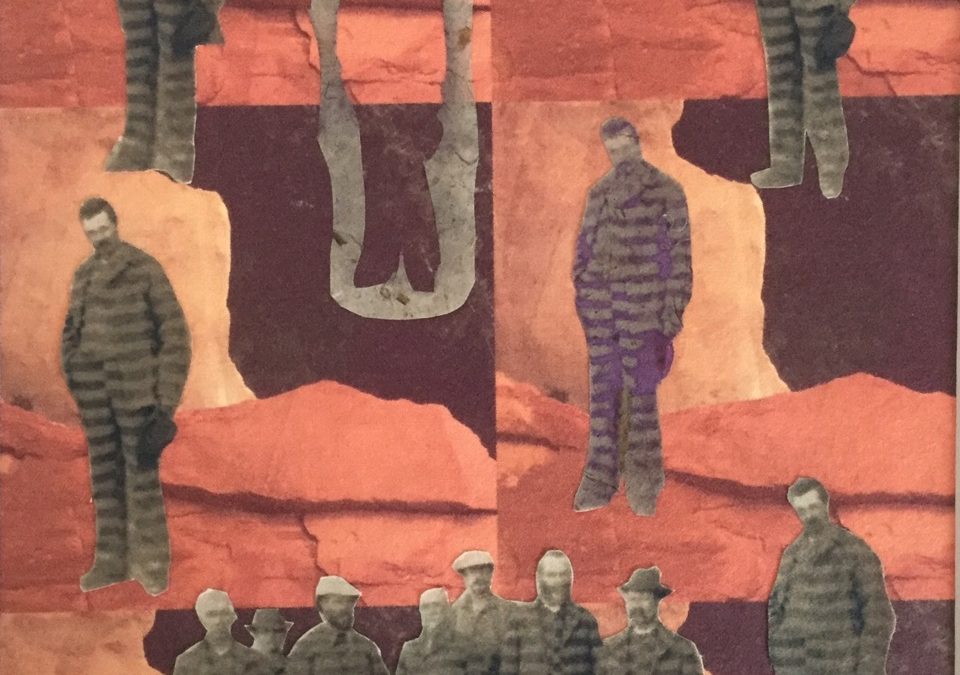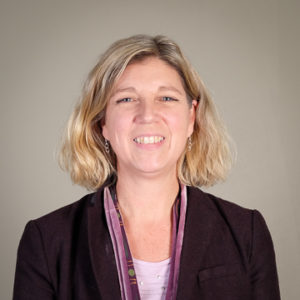Bricolage: Construction or creation from a diverse range of available things, something constructed or created from what is at hand. The word suggests collage, the medium of Jim Tober’s artwork, while Claude Lévi-Strauss introduced the word in anthropology, the disciplinary background of Carol Hendrickson. The Crowell Gallery is pleased to show the work of two educators whose love of creative reconstruction has cohabited with a life of academia, and has come to the fore in their combined exhibit this January.
Carol Hendrickson is professor emerita of anthropology at Marlboro College. During her teaching career she used her college art training to encourage students to draw as well as write as part of field research. This work with students led her to keep extensive visual field notes documenting her own travels and research abroad. While on location, she spends hours drawing, allowing her to capture the immediate impressions of a time and place. She sometimes enhances journal pages with ephemera from trips—tickets, wrappers, photos, flyers—thus producing collages of materials that are telling of a society. Along with store-bought journals, Carol creates handmade field journals as well as artists’ books for her work. In May 2019 she was an AIRIE (Artist In Residence In Everglades) fellow and spent the month living and working in the Everglades.
Drawing is central to my understanding of the world. Sitting down, picking up a pen or brush, and drawing allow me to dwell intensely with a subject. After studying art (and math) in college I contemplated a career as an artist, but ended up studying cultural anthropology and working in Guatemala. Teaching anthropology at Marlboro College—I am professor emerita now—enabled me to travel abroad with students. In an effort to get them to see and think about the world in different ways, I encouraged them to take visual notes along with written ones. Drawing regularly as part of fieldwork also transformed my own research practice and now I both write and draw extensively when I travel. In addition, during a workshop on making field journals, I discovered the world of artists’ books. Artists’ books—handmade books wherein the structure of the book plus the placement of words and images all contribute to a book’s message—inspire both my anthropology and art work. They have become another means by which I think through my experiences and those of others.
In this exhibit there are examples of both my illustrated field journals and what I call “anthro-artists’ books.” In May 2019 I was an AIRIE (Artist In Residence In Everglades) fellow and spent the month living and working in the Everglades. A number of pieces in this room grew out of that experience.
Jim Tober is emeritus faculty in economics at Marlboro College. He studied economics at Berkeley (BA 1968) and at Yale (Ph. D 1973) and came directly to Marlboro to begin his 40-year teaching career. His diverse teaching and administrative work over the years has no doubt influenced his collage making, but he is reluctant to speculate as to the particulars.
“In my senior year as a Berkeley undergraduate in the 1960s, having largely fulfilled my major requirements in economics, I enrolled in studio art courses—drawing, figure drawing, painting—on a very low-risk pass/not-pass basis. I found myself making a series of acrylic paintings on Masonite panels, featuring hard-edge geometric shapes and lines. It is now apparent that these share a sensibility with collage; some even incorporated mixed media. I carried on a bit through graduate school as a counterweight to the formal study of economics. Meanwhile, I had set up a rudimentary darkroom at home and shot quite a lot of 35mm film, mostly black and white, which, as supplemented over the years with both film and digital photos, has become a substantial inventory of explored and unexplored images.
I set the painting aside for most of my 40-year career teaching economics at Marlboro College. As I was phasing into retirement, I eased back into the studio, auditing ceramics and printmaking classes, and found, in both, that I was drawn to familiar themes of color and shape. For the past couple years, I’ve been assembling/juxtaposing/superimposing paper ephemera, digital photos, inkjet prints, envelope liners, photo transfers, and photocopies into collaged images that seem both familiar and unexpected. My longer-term fascination with cabinets of curiosity and collections of various sorts feeds my interest in assembling disparate bits into coherent wholes.
My collage work to date is eclectic and does not seem to me to be informed by a uniform aesthetic. Although I repeat some imagery, my work varies greatly in composition, materials, and presentation: a manipulated found-photograph is shown in its original, chipped frame; altered images from a 1964 visit to the Riverside (CA) Raceway are arrayed in a grid; torn washi and other specialty papers are abstractly arranged. As I sift through accumulated materials, I happen on a starting place and work from there, sometimes completing a collage, sometimes letting partially realized pieces pile up for later consideration.”


